Psoriasis, or psoriasis, is a chronic autoimmune disease that affects the skin and manifests itself in the form of red patches, plaques covered with small scales. The disease is incurable, so psoriasis treatment methods boil down to controlling symptoms, stopping pain and inflammation, and achieving early and long-term remission. There are many prejudices about disease in society. People who don't know what it is believe that psoriasis can be contracted. In the description, several types of this noncommunicable disease can be distinguished, each with individual symptoms and course.
Where does psoriasis come from
The causes of psoriasis have not been established, as little is known about this skin disease. Symptoms of the disease in the early stages can resemble dermatitis, eczema, but it is impossible to confuse pronounced psoriatic plaques with other skin diseases. Scientists and doctors agree that one of the factors for which psoriasis appears is a genetic predisposition.
For example, if a mother is diagnosed with a skin condition, there is a 15% chance that the baby will inherit the disease. If both parents are treated for psoriasis, the risk of hereditary transmission of the disease increases by 4 times, that is, it rises to 60%.
But even if the parents carry a gene that causes a skin disease, that doesn't mean the baby gets sick. The causes of psoriasis on the body are different. Stress, nervous shocks, mental trauma "activate" skin diseases.
Psoriasis is also due to:
- skin lesions, burns, insect bites, tattoos;
- medicines the person is taking;
- infectious diseases;
- alcohol abuse, smoking;
- exposure to chemicals, such as detergents;
- dermatitis and fungal diseases;
- HIV;
- pregnancy and childbirth.
Recently, scientists have claimed that psoriasis can appear due to malnutrition, but no convincing evidence has been found in favor of this theory.
Doctors know that a certain gene is responsible for skin disease, but they cannot determine the exact causes of psoriasis.
What does psoriasis look like in the early stages?
The first symptoms of psoriasis look like this:
- A person's nails exfoliate and the skin cracks.
- A pustular rash appears on the body.
- The skin begins to peel off and die.
- There are blisters on the hands and soles of the feet.
- Itchy red spots covered with whitish scales appear on the elbows, knees, face.
A person sinks into depression, is not interested in anything, notices a breakdown and even low self-esteem.
On the head, face and under the hair
First, a person notices increased peeling of the skin, which resembles dandruff. Then the plates themselves appear, covered with silver scales. The rash grows, affects an increasing area of the skin, but even with pronounced psoriasis, the hair does not fall out.
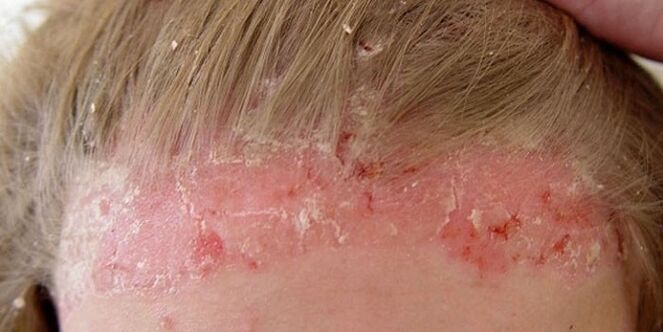
In 80% of cases, psoriasis primarily affects the scalp. If the pathology is not treated, the rashes appear in other places.
A harbinger of a disease affecting the skin of the face is severe itching. At first, psoriasis resembles an allergy, the skin becomes covered with small red spots that increase in size and merge to form an inflamed lump or papule.
The rashes cover the entire face. The points themselves are covered with scales, which can be separated easily and painlessly. Below them is a terminal film that resembles scarlet shiny skin. If the itchy spots are combed, they are covered with small drops of blood.
On arms and legs
Skin disease psoriasis affects the skin:
- upper arms and legs;
- brushes;
- knuckles on hands and feet;
- near the nails.
The disease begins with the appearance of small reddened areas of rounded shape on the skin between the fingers, shins, wrists, elbows and knees.
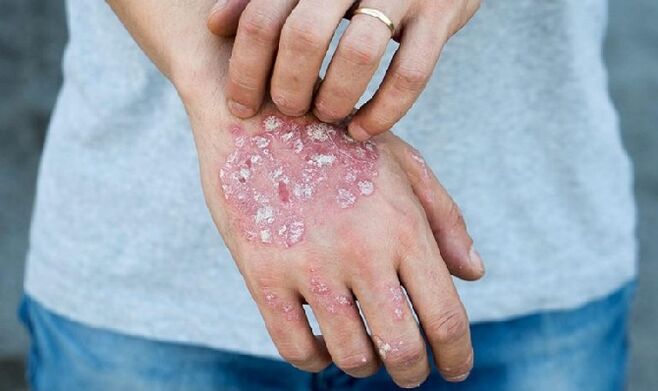
In 10% of cases, psoriasis affects the nails. Psoriatic plaques appear on the nails long before the onset of the main symptoms of the disease affecting the skin of the body.
On palms and feet
Palmar-plantar is called the manifestation of psoriasis, which affects the skin of the palms and feet.
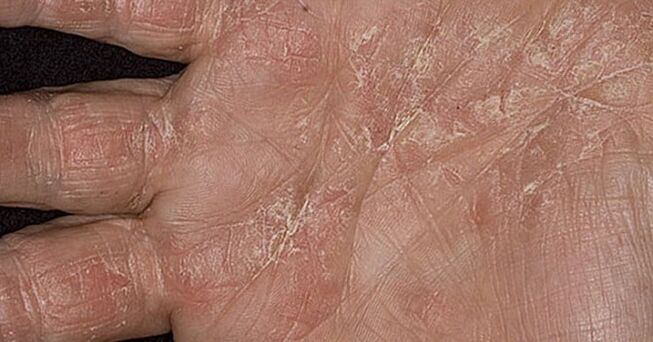
It is characterized by the appearance of scaly red spots covered with whitish scales. At the site of the rash, the skin thickens, cracks, and becomes inflamed. The aggravated form is expressed in the formation of pustules, deep abscesses.
On the bust
The signs of a disease affecting the skin of the body are similar to psoriasis on the palms and feet, head, face. Rashes often appear in the back and lower back.
Red spots covered with itching and itching of grayish-white scales. They cannot be combed, because the thin terminal film does not protect the smallest capillaries and the surface of the skin, when combed, is covered with microscopic droplets of blood. Psoriasis can appear in the chest area and on the sides.
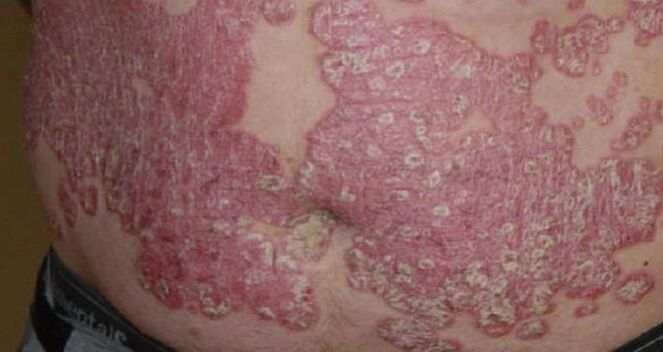
The red spots expand and merge into formations that doctors refer to as "paraffin lakes. "
Psoriasis causes various skin changes:
- peeling;
- thickening;
- edema;
- the appearance of blisters-pustules.
Often, keratinized dry skin cracks, which leads to pain and discomfort.
Other localizations
Psoriasis spreads throughout the body if the disease is ongoing. Psoriatic plaques can be located in the groin, buttocks, elbow and knee folds. The disease causes great discomfort, because the rashes itch, but they should not be scratched. Careless actions can easily damage the thinned affected skin and cause further infection.
The symptoms of skin psoriasis, regardless of location, are similar, so a dermatologist diagnoses the disease based on:
- red rashes with a clear border;
- the so-called psoriatic triad: the phenomenon of the "stearin stain", ie the plaque itself, covered with soft silver scales, the presence of a terminal film under them, and tiny droplets of blood that cover the stain if it is scraped;
- the appearance of new plaques at the site of skin lesions;
- itch.
Psoriatic arthritis
This form of complication affects the joints, tendons, which lose density and elasticity.
Arthritis accompanies the symptoms of psoriasis, is characterized by inflammation of the joints and is divided into:
- Asymmetrical, affecting several joints on one side of the body and does not affect paired bone elements.
- Symmetrical, reminiscent of the rheumatoid. Paired joints suffer. This form often leads to disability.
- Distal interphalangeal joints, affecting the phalanges of the fingers and toes.
- Vertebral column, in one or more departments.
- It deforms when the joints are destroyed.
Inflammation of the joints is characterized by severe pain, swelling, the skin at the site of the affected bone joint has a bluish color. In this case, a person experiences exhaustion, sometimes the lymph nodes increase.
Psoriasis classification
The types of psoriasis differ based on the nature of the rash. The international classification describes 10 forms of a chronic autoimmune disease:
- The most common is plaque or simple psoriasis. It affects any part of the body, occurs in women and men. It begins with the appearance of swollen red spots, which are subsequently covered with a whitish and scaly "plaque" that is easily peeled off.
- After a strep infection, guttate psoriasis can affect the skin. It occurs in the thighs, lower legs and also affects the neck and back. Rashes of red, bluish and lilac color rise above the surface of the skin and resemble droplets in shape.
- The spotted form is characterized by extensive rashes all over the body. The disease is more common in women than in men.
- Pustular, the most severe, which can be distinguished by the appearance of blisters: pustules surrounded by red, inflamed skin and filled with clear fluid. If an infection gets into the blisters, fragments of pus appear in the contents.
- Follicular, affects the skin of the legs and thighs, in the form of small whitish papules.
- Flexor surface psoriasis, which affects the skin in folds, for example, in the folds of the knee, groin, under the breast, under the armpits.
- Palmar-plantar, which often appears in people engaged in physical labor.
- Psoriatic onyx only affects the fingernails and toenails. Nails change color, become yellowish, exfoliate, sometimes die. The skin around the nails thickens.
- The scalp, characterized by red scaly rashes in the area of hair growth and itching.
- Seborrheic, most often localized on the chest, behind the ears, between the shoulder blades, in the nasolabial folds. Psoriatic foci are very flaky, often eczema-like, covered with purulent scabs.
- Symptoms of the erythrodermal form of psoriasis are pronounced. The affected skin can peel off with plaques, a person feels severe pain, the body temperature rises. Untreated erythroderma results in pyoderma, a purulent lesion of the skin and can lead to death.
Any form of psoriasis requires timely treatment, which can be prescribed by a dermatologist only after the necessary examination and research.
How psoriasis manifests itself in the different stages
In total, 4 stages of the development of psoriasis are distinguished:
- early or early;
- progressive;
- stationary;
- regressive.
In most cases, psoriasis begins with the appearance of small papules. Round pink shiny patches, sometimes no more than a pinhead, raised above the surface of the skin and have a clear border. They are covered with silver flakes. The presence of rashes in the initial stage of psoriasis can be confused with eczema or an allergic rash.
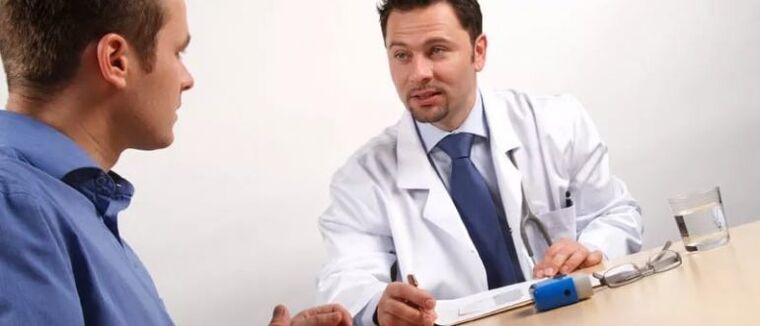
The clinical picture of the disease at different stages varies. For example, severe skin inflammation is characteristic of an acute or progressive form that requires medical attention and intensive care.
However, the rashes do not disappear, but increase and merge with each other. Psoriatic plaques, clearly delimited by a pink corolla, begin to peel off. The affected skin is unbearably itchy and itchy.
It takes anywhere from 2 weeks to several months, and psoriasis flows into a stationary phase. The growth of psoriatic plaques stops, peeling increases, which covers the entire affected area of the skin.
With regressive psoriasis, peeling gradually disappears, psoriatic plaques flatten and gradually disappear. There are no traces, scars or scars on the skin. Sometimes there is hyperpigmentation of the skin. In the remission phase, the skin acquires a normal color and texture.
What is the danger of the disease
The severity of the course of the disease depends on the condition of the skin. If the injuries are not extensive, the person leads a normal life. Physical and psychological discomfort is experienced by people whose rashes occupy a large area, the skin becomes inflamed. A significant health risk is a complication of pustular psoriasis if an infection has entered the blisters.
Psoriatic arthritis is also dangerous because some of its forms destroy the joints and lead to disability. However, inflammation of the bone joints develops quite rarely, in 10% of cases.
Even if the plaques on the skin are insignificant and the person feels normal, it is necessary to undergo an examination by a dermatologist who will make a diagnosis and begin treatment. Timely access to a doctor will prevent complications and help achieve a stable remission.
Complex treatment of psoriasis
There is no effective way to get rid of psoriasis forever. Skin disease is treated by various means. A person is prescribed pills, ointments, and physiotherapy is prescribed. It is recommended to take healing baths and take care of the skin condition carefully, to prevent injuries, such as scrapes, cuts, scrapes.
Comprehensive psoriasis treatment works if a person complies with medical prescriptions.
How psoriasis is treated with pharmaceuticals
These are ointments, tablets, injections that the attending physician prescribes to the person who asked for help. Tablets are drunk at the appointed time of the day before or after meals, ointments are applied to the affected areas with clean hands, injections can be done at home or in the hospital. These can be products based on plant components, hormones and other chemically active substances.
In the complex therapy of the use of squamous lichen:
- Antihistamine medicines, which are prescribed if a person develops an allergy.
- Hepatoprotectors that support the liver.
- Immunomodulators that facilitate the course of the disease.
- Immunosuppressants in the form of injections. They are effective, but expensive, and have serious side effects. Medicines should not be used by people with infections or oncology.
- Glucosteroids are effective, but they are addictive. Therefore, treatment with hormonal drugs lasts no more than 2 weeks.
If scaly lichen is easy, the doctor tries to limit himself to topical medications.
Topical medicines - ointments, sprays
Local remedies for psoriasis are divided into:
- Hormonal, which affect the body's autoimmune processes.
- Therapeutic, which includes zinc, naphthalan, tar, vitamins. They moisturize cracked skin, soften hardened psoriatic lesions, support skin function and restore damaged coverage.
Hormone skin ointments, lotions and sprays are used during an exacerbation. Biologically active substances in the composition of powerful creams:
- reduce itching;
- relieve swelling;
- narrow blood vessels;
- relieve pain and fight inflammation.
Apply the product on the affected areas of the skin of the body, face and parts of the head. Medical ointments are often used after the acute period of psoriasis has passed, and doctors advise against the use of hormonal preparations and creams with vitamin D for more than 2 weeks.
Pills and injections
A person interested in how to treat psoriasis can ask a dermatologist for effective pills and injections that are used in complex psoriasis therapy.
- Some medications are prescribed if psoriasis is severe. For example, the pills a person receives if damaged skin does not heal.
- Doctors prescribe B vitamins, folic acid, omega acids, other multivitamins and lecithin. These drugs help recovery, are not addictive, shorten the duration of treatment and prolong remission.
Complex therapy of squamous lichen is not limited to the ingestion of special agents and vitamins.
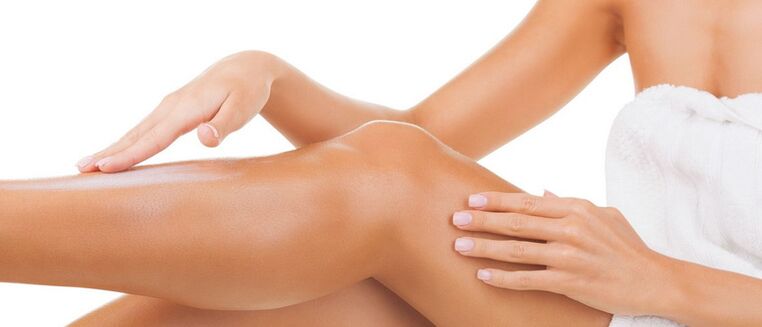
If a person follows the rules, uses high-quality cosmetics, maintains the health and condition of the skin, then psoriasis is practically not terrible for him.
If there are no contraindications, a person can administer injections containing immunosuppressants:
- Some medications are administered subcutaneously, while others used to treat psoriatic arthritis are administered intravenously.
- Injections have serious contraindications. They cannot be used by subjects under the age of 18, pregnant and lactating, in the presence of malignant tumors and infectious diseases.
Homeopathy
Manufacturers of homeopathic remedies claim that the use of such medicines reduces the risk of relapse and ensures a speedy recovery from the problem. In addition, the funds:
- Supports immunity and health of internal organs.
- They are a source of minerals and vitamins needed by the body.
- Restores the work of the intestine, seeding the digestive tract with beneficial bacteria.
- Helps eliminate toxins.
When selecting drugs, the homeopath takes into account the history of the person, the stage and nature of the course of the disease, heredity and the psychosomatic factor.
Official medicine has no evidence of the effectiveness of homeopathic remedies in the treatment of psoriasis.
Physiotherapy in the fight against skin diseases
Most often, the affected skin is irradiated with light waves of the ultraviolet spectrum of different lengths or with a laser. Sometimes before the procedure, a person takes psoralens, which increase the sensitivity of skin cells to radiation. The doctor also prescribes cryotherapy, when the affected skin is exposed to low temperatures. More recently, ultraviolet blood irradiation has been used against psoriasis.
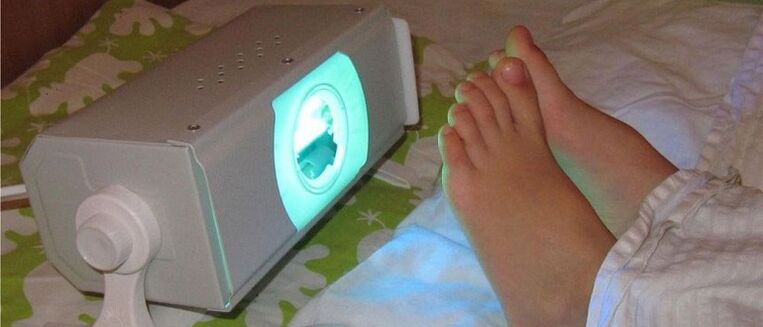
Ultraviolet irradiation is one of the simplest methods of physiotherapy treatment. At the same time, the effectiveness of this method showed quite safe results.
The length of the sessions varies, but physiotherapy is quite effective. This is one way to quickly cure psoriasis. Procedures return activities to a person, allow him to live and work fully.
It is possible to cure psoriasis forever folk remedies
Scaly lichen is not curable. Tablets, ointments, injections fight the symptoms of the disease, reducing the number of relapses. Folk remedies are no exception. Decoctions, tinctures, healing baths contribute to the onset of remission, but do not relieve autoimmune disease.
Medicines for oral administration
Means based on herbs and medicinal plants help stop the symptoms of psoriasis. The safest are chamomile decoction, fresh aloe juice, compresses and decoctions of rhizome and burdock leaves.
In the pharmacy you can buy herbal preparations against scaly lichen. They can be prepared with boiling water, infused and drunk before or after a meal, or you can pour them into water and take therapeutic baths.
According to traditional medicine, the use of hydrogen peroxide removes the manifestations of psoriasis. Use the drug:
- In the form of a solution. First dilute a drop of product in 3 tablespoons of water and drink on an empty stomach half an hour before meals. Gradually increase the strength of the solution to 10 drops for the same amount of water. Take the medicine every three days.
- Externally, the compresses are applied to the affected skin for an hour, wetting a sterile gauze in a solution of 2 teaspoons of peroxide and 50 ml of water.
Before using any folk remedies, consult your doctor.
Packs and baths
Compresses and baths with decoctions of medicinal plants will not cure the disease, but will relieve the general condition, soothe itching and inflammation. Produced for external use:
- chamomile;
- succession;
- thyme;
- burdock root;
- oak bark;
- jump;
- wise and others.
It is not recommended to take baths for more than 20 minutes.
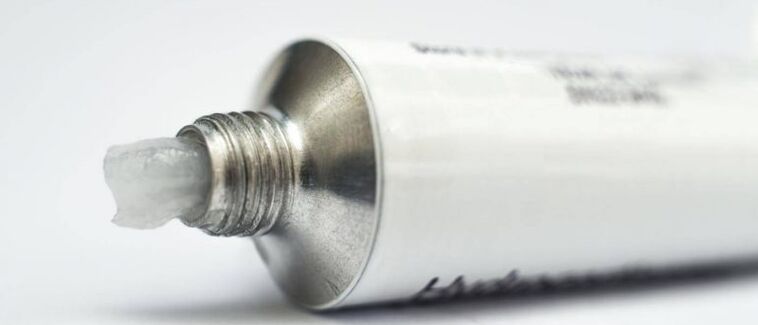
After the bath, moisturizers and therapeutic ointments are applied to the skin.
Baths and compresses with herbal decoctions have practically no contraindications.
Skin protection and care
There is no complete cure for psoriasis. But for the entire time of treatment and during the period of remission, a person must properly take care of the skin:
- Avoid traumatic effects on the skin. Don't scratch, don't scratch. During physical work or cleaning, use protective equipment.
- Wear comfortable clothes made from natural materials.
- Use special dermatological cosmetics.
- Moisturizes the skin.
- Avoid exposure to direct sunlight.
Prevention measures also include changes in the diet and lifestyle that the person makes.
Change your lifestyle and diet
Food is not the cause of psoriasis, however malnutrition weakens the body's defenses, reduces resistance to stress factors. Therefore, a person with scaly lichen needs to monitor their daily routine and nutrition.
The doctor, when asked how to treat psoriasis, will list preventive measures:
- Refusal of heavy, fried and fatty foods.
- Active lifestyle, moderate physical activity.
- Sunbathe in the evening and morning hours.
- Stop smoking and drinking alcohol.
A person should give preference to healthy meals with a high content of nutrients, vitamins and minerals.
What to do if a child is sick
The first thing parents do, noticing the manifestations of scaly lichen on children's skin, is to seek help from a doctor. Treating the disease in the early stages can reduce the intensity of rashes that cause physical and emotional distress to children.
It is necessary to teach the child to properly care for the skin, to adhere to a healthy lifestyle. Socialization is very important for children, so parents should encourage the child's desire to play sports, make friends, attend clubs. To cope with emotional distress, children may need the help of a psychotherapist who teaches them not to react to possible silly remarks from peers and even narrow-minded adults.
Is psoriasis completely treatable?
A person who is faced with itchy, scaly rashes, which bring physical and psychological discomfort with them, tries to find out whether this disease is cured or not.
Everything about psoriasis and its treatment can be learned from the dermatologist you turned to for help. There are associations and support centers where you can also get the necessary information, including legal information, such as what benefits are due if a person is diagnosed with psoriasis.
It is impossible to completely cure psoriasis, since the disease is associated with a genetic factor, and genes are not amenable to drug therapy, procedures, homeopathy and folk remedies.
Modern medicines, ointments, procedures really effectively fight the symptoms of the disease, prolong remission. But, regardless of the methods used, psoriasis can come back. The disease recurs more often if a person neglects medical examinations, does not follow simple rules of prevention.
The disease can be prevented
"Three pillars" on which the prevention of skin diseases is based:
- Respect for the rules of personal hygiene.
- Proper nutritious nutrition.
- Refusal of bad habits.
For washing it is better to use only cosmetic dermatological products purchased at the pharmacy. Well, if they contain tar.
























